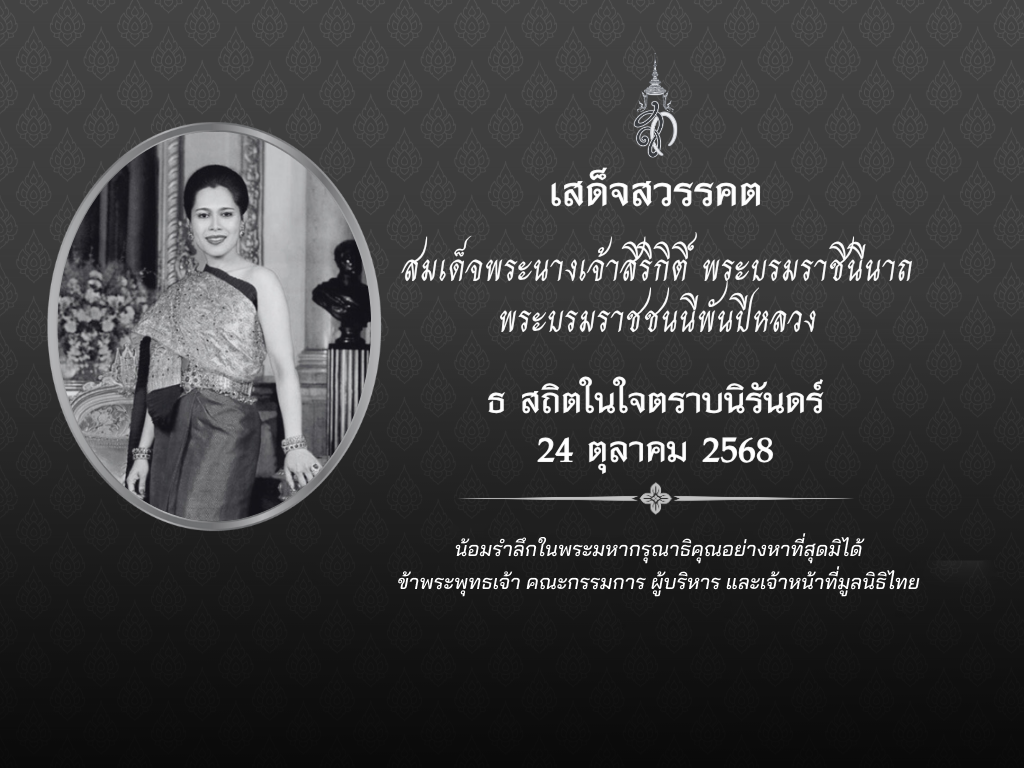
Anyone taking a close look at the Thai way of life cannot help but notice a preponderance of fresh flowers and banana leaves – many of them sitting inside the omnipresent spirit houses that stand outside homes, offices, and shopping complexes. These natural materials are not merely decorative though; they are often turned into something elaborate and spiritual.
According to Brahmin (known today as Hinduism) beliefs, many of which have made their way into Thai culture and continue to play a major role, particularly in royal ceremonies, banana leaves are considered “pure and untainted” because banana-leaf containers are never reused. Reusable containers may look clean after being washed but, from a Brahmin point of view, invisible elements may still contaminate the seemingly spotless plates.
The ready availability of banana leaves all over Thailand is very likely the main factor behind the Thai passion for using banana leaves for many things in everyday life. Thais, in the old days and in some remote areas today, usually place or wrap food and desserts in folded banana-leaf containers. But it is almost certainly the traditional Brahmin beliefs that inspire the use of the leaves for Bai Si (บายศรี).
Bai Si: Offering for Luck
Bai Si is a decorative banana-leaf cone used as an offering to the deities as well as tokens in rituals and religious ceremonies. The name Bai Si comes from the Khmer word “Bai”, meaning rice, and the Sanskrit word “Sri”, meaning good fortune. True to its meaning, Bai Si often contains rice.
Millions of Thais have grown up with Bai Si. The decorative banana-leaf cones are present in many important occasions throughout people’s lives including births, Buddhist ordinations, weddings, and more.
It is therefore not an overstatement to say that Bai Si permeates all aspects of Thai life. For centuries, Thais – commoners and royals alike – have prepared Bai Si as offerings to the spirits on special occasions in the hope of being rewarded with good fortune.
However, the Bai Si used by commoners and royals differ in terms of decorations.
For commoners, there are two types of Bai Si. The first, Bai Si Pak Cham (บายศรีปากชาม), literally meaning a Bai Si in a bowl, is small in size. To prepare a Bai Si Pak Cham, a banana leaf is rolled into a cone and cooked rice is spooned into it. The cone sits in a bowl with its tip pointing upwards. The bowl used for Bai Si Pak Cham should be round and not too large. This can range from simple paper bowls to elegant Benjarongs (traditional ceramic bowls painted in five colors). A wooden stick is pushed down through the cone, and a hard-boiled egg, known as kai kwan (ไข่ขวัญ), is speared on the tip and topped with flowers. Other popular materials used to decorate the Bai Si tip include lotus buds and marigolds. Overlapping folded banana-leaf decorations known as nom maew surround the cone. Cucumber, sugarcane, desserts, and candles are often placed in the bowl, too.

Bai Si Pak Cham in a patterned papaer bowl [photo: พญานาค.net]
The second type, Bai Si Ton (บายศรีต้น) or Bai Si Yai (บายศรีใหญ่), is bigger and requires a wooden structure to form its exquisite shape. Its components, however, are very much like Bai Si Pak Cham – with a banana-leaf cone, nom maew, and flowers – but more extravagantly decorated. The fruit pieces put inside Bai Si Ton are beautifully carved. Thais believe that Bai Si Ton is a replica of Sumeru – the sacred mount in Brahmanism and the residence of the god Shiva. When the Bai Si Ton is presented, it is like an invitation for Shiva to attend the ritual.

Variations of Bai Si Ton [cr. Youtube: อย่าหยุด อยู่กับที่]
On the other hand, there are three variations of Bai Si for royals, namely: an elaborate version of Bai Si Ton; Bai Si Kaeo, Thong, and Ngoen (บายศรีแก้ว ทอง เงิน), for which gold, silver, and glass footed trays are used in place of banana-leaf cones; and Bai Si Tong Rong Thong Khao (บายศรีตองรองทองขาว), which is similar to Bai Si Ton but bigger, more exquisite, and placed atop a platinum footed tray.

Bai Si Keo, Thong, and Ngern [cr. FB: Royal Archives of OHM]
Just like commoners, royals traditionally use Bai Si for important occasions, such as a blessing ritual for newborn royals and ordinations of royal family members.
Culture of Floral Decorations
In Thai culture, flowers are not restricted to beautifying the bowls or trays of Bai Si. They are part and parcel of the Thai way of life and are turned into various other forms such as garlands, hanging floral decorations and floral coverings.
Fresh flowers always adorn the venues of important ceremonies like weddings and are also placed in front of the coffin at a funeral.

Floral decorations on a coffin [cr. FB: @nong4289]
Some floral decorations are very simple – with blooms arranged in vases or flower pots lined up in rows. Others are exquisite and a great deal of skill is needed to string thousands of flowers together for hanging floral decorations or floral nets. Popular flowers for such artistic creations are jasmine, Calotropis gigantea (popularly known as Dok Rak in Thai or the crown flower), and pearly everlasting.
Ladies Famous for Their Flower Skills
In the old days, most – if not all – Thai women needed to learn how to string flowers together, and their quality was often judged based on their skills. Mothers, therefore, made sure their daughters could master the intricacies of floral creations. Some prodigies went on to become famous traditional florists.
It is not clear when the floral-decoration culture started in Thailand but Thao Si Chulalak (widely known as Nang Noppamas), a consort of a king in the Sukhothai Period (1249 – 1463), is famous for creating a beautiful krathong (กระทง) decorative floats used as offerings to the Goddess of Water.

Ladies offering krathong [cr. Hat Yai Municipality]
In the Rattanakosin Period (1782-present), Chao Khun Tanee – a noble consort of King Rama I (1782 – 1809) – also made her name as a master in stringing flowers and sewing banana leaves. In the reign of King Rama IV (1851 – 1868), Princess Lamom skillfully created floral chandeliers, floral nets and hanging floral decorations. In the reign of King Rama V (1868 – 1910), Queen Saovabha Phongsri (1864-1919) placed a creative and never before seen floral decoration in the shape of the naga, the mythical and semi-divine serpent, on the dining table when entertaining foreign guests.
The years brought more innovative techniques in flower use. Chao Khun Phra Prayurawong (1854-1943), a noble consort of King Rama V, for example, invented a floral sash decorated with small hanging flowers. MR Pam Malakul (1874-1938), meanwhile, devised a floral garland to wear around the neck. Today, such elaborate garlands are often placed around the necks of a bride and her groom and sometimes hung over the bow of a boat.

Chao Khun Phra Prayurawong in old age [cr. Silpa-Mag.com]
Fresh flowers, moreover, are often formed into a lotus shape and placed on top of a footed tray. These floral trays are presented to monks, sacred statues, and important persons.
Banana Leaves and Fresh Flowers in Modern Thailand
Even though Thais’ lifestyles have changed dramatically in recent decades, the flower and banana culture has remained intact. It has become well entrenched in all aspects of society, with folded banana leaves and Bai Si as omnipresent as Thai-style floral decorations. In fact, even new-generation florists have embraced the ancient arts though some have breathed a modern touch into their creations. So, when you come to Thailand, do not forget to take time out to admire Thailand’s banana-leaf and floral creations.

An elaborate array of Bai Si crafted to resemble mythical serpents [photo: Bai Si Mae Mali]
*************************
Reference
Lisuwan, Wibun. Bai Sri Lae Krueng Dok Mai Sod [Bai Sri and Flower Offerings]. Watthanatham Journal: Department of Cultural Promotion, vol. 53, no. 4, October-December 2014, p.28-33. Available at http://magazine.culture.go.th/2014/4/culturemag2014-4/assets/common/downloads/culturemag2014-4.pdf.




